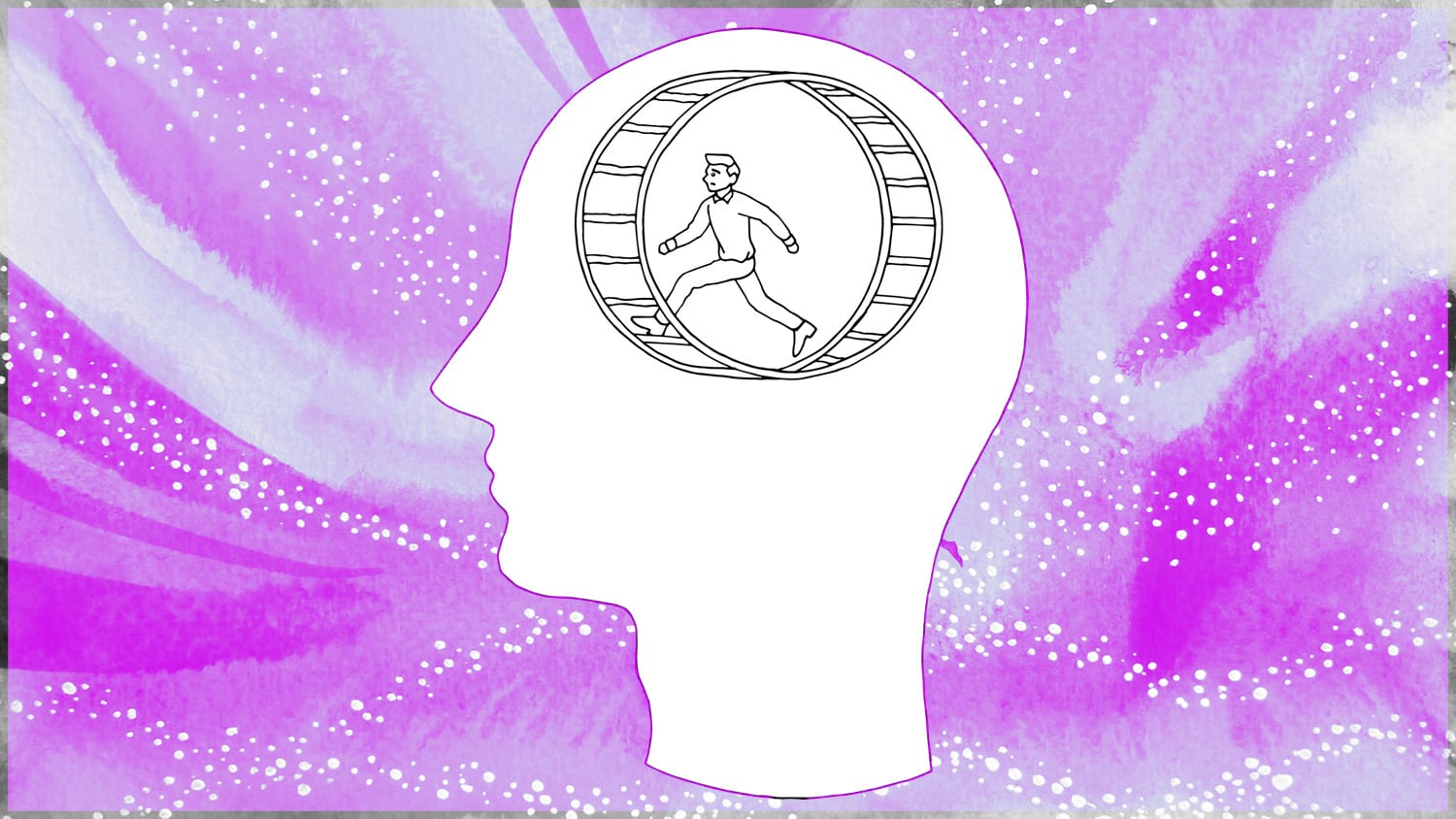And they lived happily ever after. It’s the stock ending to many fairy tales, but this bedtime lesson is as make-believe as the stories that teach it. Happiness’s true value isn’t in its everlasting quality. It’s that it makes us antifragile.
When put under stress and pressure, most things break or bend to distortion. Even tough construction materials like concrete and rebar suffer this fate. If something is resilient, such as rubber, then it returns to its original shape when the pressure lets up. But if something is antifragile, then strain makes it stronger. Think of how muscles strengthen from the strain of a workout or how a diamond forms from carbon being squeezed underneath geologic forces.
What does this have to do with happiness? As Tal Ben-Shahar, positive psychologist and the co-founder of the Happiness Studies Academy, explains, our psychology can correspond to either of these three conditions. When hardships and painful emotions arise, we can try to be tough but put under enough pressure and we crack. We can be resilient and bounce back. Or we can be antifragile and use the experience to grow stronger (a phenomenon known as post-traumatic growth).
Because happily ever after is a myth, we can’t pursue happiness directly. Instead, we need to seek out the conditions that trigger our antifragile systems. Even in hard times.

Frustration: an ingredient of happiness?
“If I wake up in the morning and say to myself, I want to be happy, I’m going to be happy no matter what, I am directly pursuing happiness,” Ben-Shahar writes in his book Happier, No Matter What. “This deliberate pursuit to be happy reminds me how important happiness is to me — of how much I value it — and therefore hurts more than it helps.”
The reason for this hurt is that such a mindset views hardship as damaging to happiness. If something causes pain, regret, stress, sorrow, discomfort, embarrassment, or a host of other less-than-intoxicating emotions, then it’s to be avoided. Best to aim for the blissful and ever-satisfying.
That is, of course, impossible. Painful emotions aren’t like trans fats. You can’t cut them from your life. They will occur, and when they do, the person who values happiness as the gold standard will feel like a failure. If they were truly happy, their reasoning goes, then they wouldn’t experience such adversity. If they were truly happy, then they would be happy.
Ben-Shahar likens this mindset to looking directly at the sun to understand light. The approach is not only agonizing, but it blinds us to the very thing we’re trying to comprehend. Similarly, setting our sights directly on happiness blinds us to the truth of it. Namely, painful emotions aren’t happiness’s failure state; they are an integral part of its development.
“Learning to accept and even embrace painful emotions is an important part of a happy life,” Ben-Shahar told us in an interview.
Because if we aren’t willing to face those emotions or develop the mental tools to process them, then we can’t pursue the goals and experiences that make for a productive, fulfilling life.

The indirect pursuit of happiness
Thankfully, we don’t have to stare at sunlight unaided to study it. By reflecting light through a prism, we spare our eyes and gain a richer understanding of light’s spectral components. It’s the same with happiness. By passing happiness through the prism of research, we can see it more clearly and discover its elemental makeup.
In his study of that research, Ben-Shahar has discovered five conditions that allow us to pursue happiness indirectly and, in turn, help us embrace painful emotions and grow from adversity. They are spiritual, physical, intellectual, relational, and emotional well-being (or SPIRE for short). People who nurture all five are, on the whole, happier than those who don’t or overinvest in one or two.
Happiness resides on a continuum. It’s a life-long journey.
Tal Ben-Shahar
Happiness inSPIREed
While we don’t have the time to analyze each condition — Ben-Shahar had to write an entire book to do so — we’ll use spiritual well-being to illustrate how the SPIRE method works.
Spiritual well-being is about finding meaning and purpose in your life and being fully present in the moment. Many find that in religion, but Ben-Shahar isn’t using spiritual in the sense of access to a higher power or the unveiling of life’s ultimate meaning. People can find spirituality in their work, family, hobbies, charitable activities, and so on. The sense of the sacred is drawn from the fact that the activity isn’t merely an obligation. It’s a calling.
Ben-Shahar supports this with research by psychologist Adam Grant. Grant took university call center workers and separated them into two groups. The first group, the control, worked their typical shifts. They cold-called alumni, asked them for donations, and received the typical hang-ups and sour rejections.
The second group was given an extra fifteen-minute break. During that break, they spoke with university students attending the college on scholarship. The students thanked the workers for their service, discussed the value of their education, and talked about the joys of attending the university.
Grant found that the second group had more energy, became more engaged, and raised more money compared to the control. In recognizing meaning in their job, they found it more purposeful, and in doing so, they became more successful.
Happiness in the details
“Now, take a moment or two to step back and recognize the true value and intention of what you do, whether it is helping your kids with their homework, washing the dishes by yourself, going over the bills with your partner, caring for an aging parent, negotiating a deal with a client, or pushing through a difficult assignment at work. It doesn’t take much, just a few minutes of awareness—and that can make all the difference,” Ben-Shahar writes.
That last part is an important aspect of SPIRE. It doesn’t demand that we radically alter our lives to be happier. The call center workers didn’t have to travel to a remote Tibetian monastery and undergo a week-long spiritual awakening. A short, inspiring break was all it took to invigorate their spiritual well-being. Similar activities one might try include keeping a gratitude journal or meditating for ten minutes a day.
And this holds across Ben-Shahar’s SPIRE method. Small changes, thoughtfully and consistently applied, can snowball to have larger effects.

The truth of “happily ever after”
Even if you love your job, there will be days when it’s pure crunch. Even if family gives your life’s meaning, some soccer practices will be more obligation than fount of joy. And even if you’re mindful of the present, some days you’ll be filled with anxiety and dread for the future.
But happiness allows us to shore up the perseverance to pass through hardships and the fortitude to come out stronger. That’s because happiness doesn’t make us immune to hardships; it makes us antifragile. By nurturing your personal SPIRE — whatever those letters mean to you — then you add this resilience to your psychology.
“I don’t think there’s a point before one is unhappy, after which one is happy,” Ben-Shahar told us. “Rather, happiness resides on a continuum. It’s a life-long journey, and knowing that, we can have realistic rather than unrealistic expectations about what is possible.”
And the myth of “happily ever after” is a very unrealistic expectation indeed.
Learn more on Big Think+
With a diverse library of lessons from the world’s biggest thinkers, Big Think+ helps businesses get smarter, faster. To access Tal Ben-Shahar’s full class for your organization, request a demo.
There are only two kinds of people who do not experience painful emotions. The first kind are the psychopaths. The second kind are dead. There is a false understanding or expectation that a happy life means being happy all the time. No. Learning to accept and even embrace painful emotions is an important part of a happy life. And the study of painful emotions is an important part of the field of happiness studies.
My name is Tal Ben-Shahar. I’m a student and teacher in the field of happiness studies, and my most recent book is ”Happier, No Matter What”.
There is a very important concept that was introduced by Nassim Taleb, and that is antifragility. Antifragility is essentially resilience 2.0. Resilience 1.0 is when we put pressure on a system. After the pressure is lifted, that system goes back to its original form. Antifragility takes this idea a step further. You put pressure on a system. It actually grows bigger, stronger. We see antifragile systems all around us and within us. For example, our muscular system. We go to the gym and we lift weights. We’re putting pressure on our muscles. What happens as a result, we actually grow stronger. We’re an antifragile system.
On the psychological level, you know what that’s called? PTG, post-traumatic growth. So where post-traumatic stress disorder, PTSD, is about breaking down, post-traumatic growth is about growing stronger as a result of the pressure of stress. It’s antifragility. The role of the science of happiness is to teach us what conditions we can put in place to increase the likelihood of growing from hardship.
Now, there is a paradox when it comes to pursuing happiness. On the one hand, we know that happiness is a good thing, whether in and of itself or as a means toward other ends. At the same time, we also know from research by Iris Moss and others, that people who say to themselves, “Happiness is important for me, I want to pursue it,” those individuals actually end up being less happy. In fact, they’re more likely to experience depression. So the paradox is that on the one hand, happiness is clearly a good thing. On the other hand, valuing it as a good thing is problematic.
So what do we do? The way to resolve this paradox is that we pursue happiness indirectly.
Think about sunlight. So if I look at the sun directly, it’s going to hurt my eyes. However, if I break down sunlight into its elements, into its constituents, I can look at the colors of the rainbow. So I’m indirectly looking at the sunlight, enjoying it, savoring it. In the same way, pursuing happiness directly can cause more harm than good. But breaking it down into its elements can lead us to enjoy the indirect pursuit of happiness and by extension to raise our overall levels of happiness. What are the metaphorical colors of the rainbow when it comes to happiness? Here we have what I’ve come to call the SPIRE model. And it can trigger the antifragile system.
SPIRE is an acronym that stands for Spiritual, Physical, Intellectual, Relational, and finally, Emotional well-being. Spirituality is about finding a sense of meaning and purpose in life, at work, and at home. If you wake up in the morning with a purpose, you’re more likely to overcome barriers.
When it comes to physical well-being, the most important idea to look at is stress, the silent killer. In the United States, more than half of the employees do not use up their vacation time. And even those that do, close to half are still tethered to their work. The problem is not the stress; it’s the lack of recovery.
With intellectual well-being, there’s research showing that people who are curious, who ask questions are not just happier. They also live longer. Another important element is not just asking questions. It’s deeply engaging with the material. It can be text, a work of art, even nature.
Relational well-being is very important. The number one predictor of happiness is the quality time we spend with people we care about and who care about us. And it turns out the number one condition that we can put in place to increase the likelihood of antifragility of growing through hardship is the quality of our relationships.
Finally, emotional well-being. So embracing painful emotions is critical, but how do we then cultivate pleasurable ones? Specifically, the emotion of gratitude. Cicero talked about gratitude as the mother of all virtues. When we appreciate the good in our life, we have more of it.
So happiness is much more than pleasure. Happiness is whole-being. These five elements together create that sunlight: happiness. I don’t think there is a point before which one is unhappy after which one is happy. Rather, happiness resides on a continuum. It’s a lifelong journey. And knowing that, we can have realistic rather than unrealistic expectations about what is possible. I do not think that things necessarily happen for the best. However, we can learn to make the best of things that happen.






